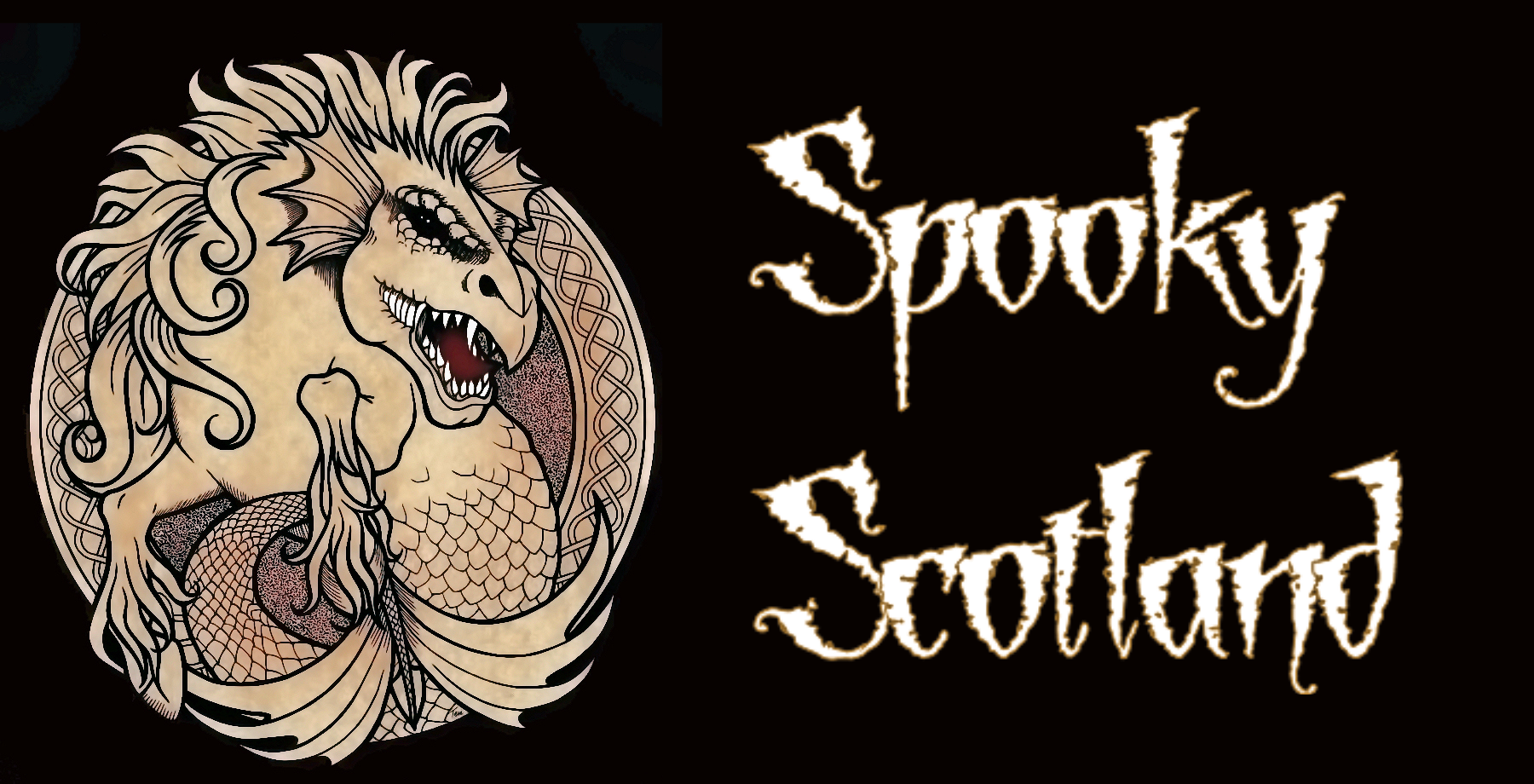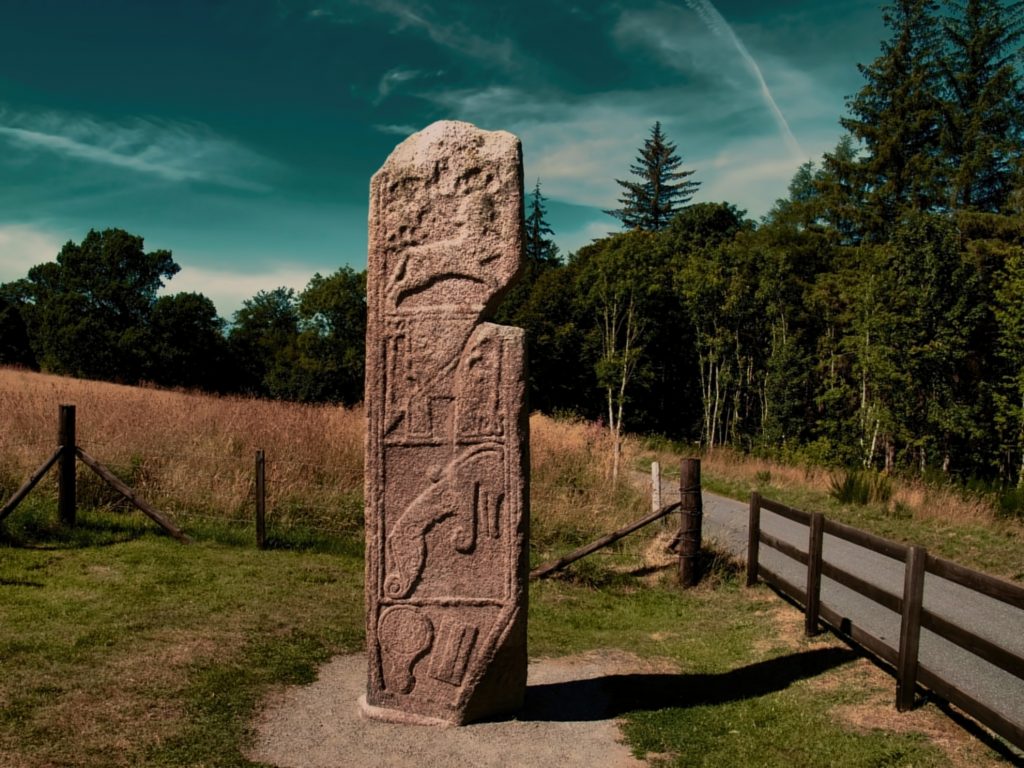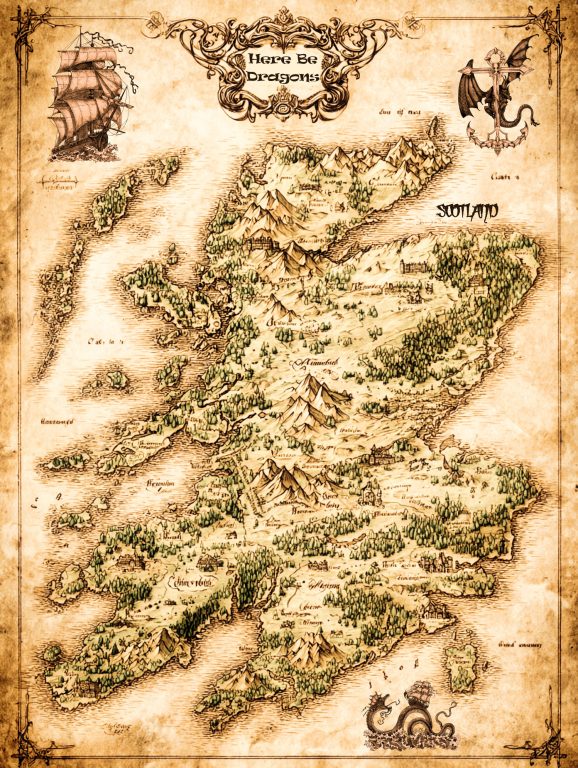Kenneth MacAlpin, or Cináed mac Ailpín as he was called in his native tongue, sat watching the gathering from his position at the head of the table. The air was tense. The Picts eyed his people, the Gaels from Dal riata, with suspicion. No doubt, Drest, King of Picts, would have preferred to forgo the feast at Scone but these were dire times. Kenneth allowed a sly smile to twitch at the corners of his lips. His plan was coming to fruition. For too long his people had been the underdogs. The Picts had dominated the political scene north of Forth for the last few hundred years. They had vanquished the Romans and then when the Scots had begun to flourish in the west, they had tried to subjugate them and sometimes had succeeded. The coming of the Vikings had changed everything.
Drest stared into his wine cup. Why had the Dal Riatan cur summonsed him and the rest of the royal house of the Picts to Scone? Perhaps he needed an ally? The Viking advance was taking its toll. Was the power of the Picts beginning to wane? Still the wine was excellent, and he could not fault Kenneth MacAlpine’s generosity. The wine and ale were flowing in abundance. Fortified with alcohol his fears and suspicions began to fade away.
Kenneth MacAlpine waited until the Picts had drunk deeply from their ale cups before giving the signal to his servants. The servants pulled out the bolts of the benches that the Picts were sitting on. The Picts fell into a pit below. MacAlpine signalled to his warriors and the killing began. As a son of a Pictish princess, he could now lay claim to the Pictish throne.
Along with The Black Dinner, this event is said to have inspired the Red Wedding in ‘Game of Thrones.’
Kenneth MacAlpin: A Man of more Myth than Fact
Many myths surround Kenneth MacAlpin. He is the hero that joined the Picts with the Scots of Dal Riata to form the Kingdom of Alba, a proto-Scottish kingdom at the end of the Early Medieval Era, thus saving his country from the threat of the Norsemen!
On the other hand, he is portrayed as a treacherous, opportunistic King who wiped out the rival faction, the Picts, to become the sole ruler in Northern Scotland.
In reality very little is known about him. We know that he born around 810 AD and that he was King of the Picts sometime between 840 and 858. He established Dunkeld as the principal church in Southern Scotland in 849. We know that he died of a tumour at the Palace of Forteviot in February 858. He was succeeded as King of the Picts by his brother Domhall and then his sons Constantine I and Aed.
The Origins of MacAlpin’s Treason
The few existing sources of how Kenneth MacAlpin became king of the Picts are suspect. With regards to Kenneth MacAlpin, the Gaelic Poem ‘The Prophecy of Berchan’ stated, ‘He is the first king who will conquer in the east, from the men of Ireland in Alba. It was achieved through the strength of spears and of swords, after sudden death, after sudden slaughter’.
It goes on to explain that Cináed tricked and massacred the Picts – ‘the stupid savages of the east’ – by plunging them in the pitted earth, sown with deadly blades. Trapped and unable to defend themselves, the Picts were then murdered, and their bodies, clothes and ornaments plundered.
The poem goes on to describe MacAlpin as ‘a man who will feed scald-crows’.
According to Giraldus Cambrensis:
“The Scots betook themselves to their customary and, as it were, innate treacheries, in which they excel all other nations. They brought together as to a banquet all the nobles of the Picts, and taking advantage of their excessive drunkenness and gluttony, they noted their opportunity and drew out the bolts which held up the boards; and the Picts fell into the hollows of the benches on which they were sitting, caught up in a strange trap up to the knees, so that they could not get up; and the Scots immediately slaughtered them all. “
Kenneth MacAlpin as an Angel
However, a very different version of events is offered by John of Fordun in his Chronicle of the Scottish Nation. According to Fordun, Kenneth’s Gaelic chieftains were too scared of the Picts to attack. Therefore, Kenneth disguised himself by covering his cloak with luminous fish scales. Then during the night, he appeared to his warriors and pretended to be an angel with a message from God and commanded them to attack the Picts. Spurred on by this angelic manifestation, the following day the Gaels fought the Picts and overcame them.
Did Kenneth MacAlpin take advantage of the Viking invasion to claim the Crowns of both Dal Riata and Pictland?
In the year 839 The Annals of Ulster record:
“The heathens (Vikings) won a battle over the men of Fortrui and Wen son of Onuist and Bran son of Onuist and Aed son of Boanta and others almost innumerable fell there.”
This was no ordinary Viking raid for plunder. This was a full-on battle. We don’t know where the battle took place, but it likely occurred in the Fortrui heartlands bordering the Moray Firth. Amongst the dead were members of the royal households of both Pictland and Dal Riata. Both Picts and Gaels found their powerbase eroded. A policial vacuum formed.
However, Kenneth did not become King of Pictland, immediately after this battle.
The Chronicle of Huntingdon states:
“Kynadius [Kenneth] succeeded his father Alpin in his kingdom, and that in the seventh year of his reign [the year 839], while the Danish pirates, having occupied the Pictish shores, had crushed the Picts, who were defending themselves, with a great slaughter, Kynadius, passing into their remaining territories, turned his arms against them, and having slain many, compelled them to take flight, and was the first king of the Scots who acquired the monarchy of the whole of Alban, and ruled in it over the Scots.”
So it seems that Kenneth MacAlpin was able to use the turmoil in the Pictish leadership after the Viking Invasions to his advantage. He most likely used this to raise an army of Scots who overcame the Pictish Ruling House.
MacAlpin as King
After the conquest of Pictland, the Gaels from Dál Riada began to migrate eastwards into the territories populated by the Picts. Kenneth MacAlpin and his administration moved to Pictland away from the raiding Vikings. According to the Chronicle of The Kings of Alba, Kenneth moved Columba’s relics from the abandoned abbey on Iona, where Viking raids made life untenable, to Dunkeld.
The inauguration stone was also said to have been moved from the island to Scone, giving it the name the Stone of Scone. However, it should be noted that the Stone of Destiny is made from Perthshire Sandstone and so may not be the original stone. The mass migration of Scots to the east most likely led to the assimilation of the Picts. Unfortunately, as Alba transitioned from Pictish to Gaelic all of the Pictish written records were lost. The only records which remain are the enigmatic Pictish carved symbol stones and cross slabs.
The Chronicle of the Kings of Alba describes a number of military campaigns which took place events that occurred during Kenneth’s reign without specifying their dates. He invaded Lothian in the Kingdom of Northumbria (Saxony) six times, and captured and razed the towns of Melrose and Dunbar. Meanwhile Britons from the Kingdom of Strathclyde attacked Kenneth’s kingdom and burnt Dunblane. Furthermore, Viking invaders raided Pictland, ravaging the territories “from Clunie to Dunkeld”.
Kenneth strengthened his power by arranging a series of royal marriages with neighbouring states. His daughters were married to rulers Strathclyde and Ireland. As a result, The Alpinid dynasty ruled Alba until the beginning of the 11th Century.




